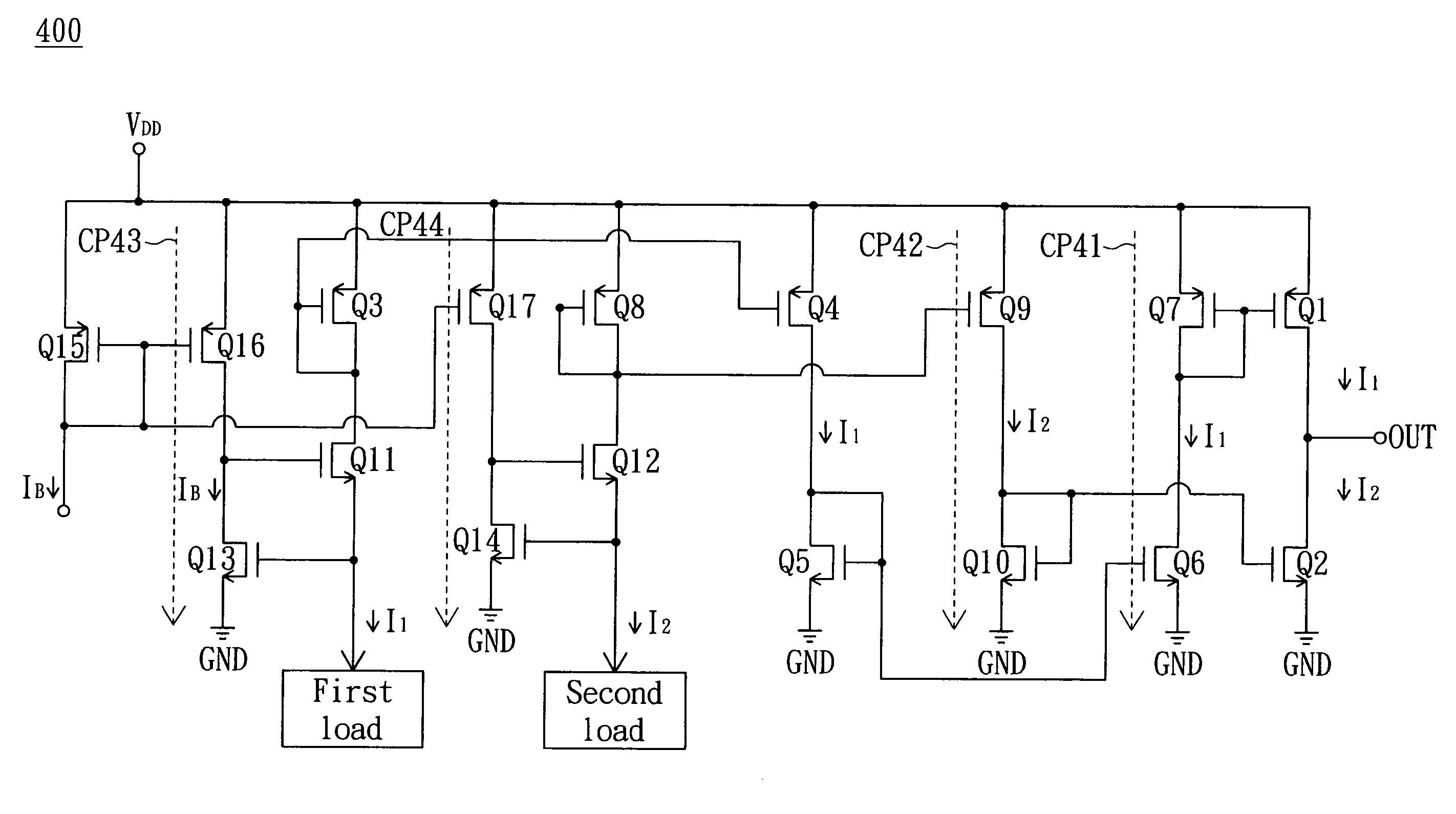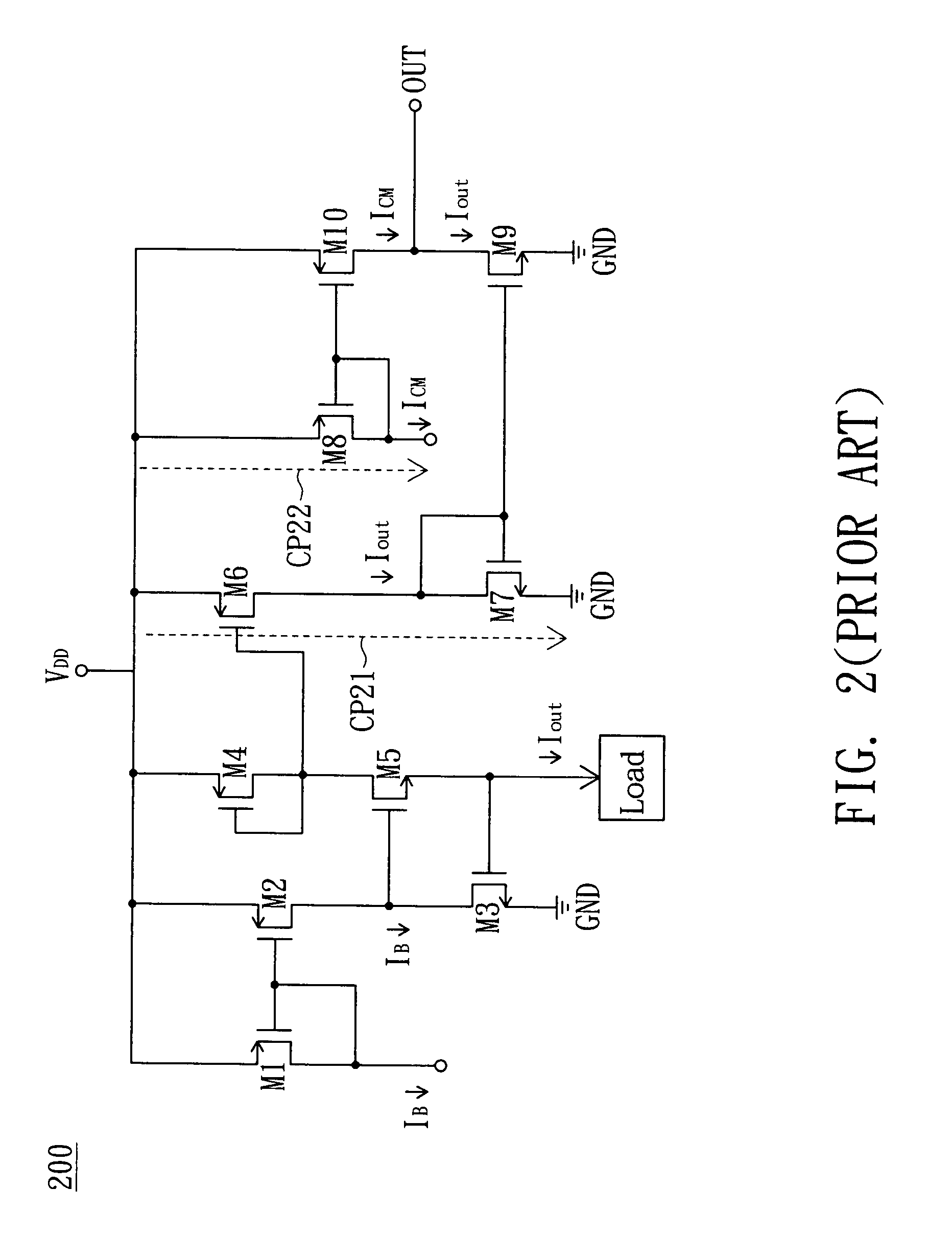Current-mode differential transmitter and receiver
a transmitter and receiver technology, applied in the field of current-mode differential transmitters and receivers, can solve problems such as noise interference, and achieve the effect of large data swing and low nois
- Summary
- Abstract
- Description
- Claims
- Application Information
AI Technical Summary
Benefits of technology
Problems solved by technology
Method used
Image
Examples
Embodiment Construction
[0019]FIG. 3A shows a circuit diagram of a current-mode differential transmitter according to a preferred embodiment of the invention. The current-mode differential transmitter 300 receives a single-end input voltage signal VI, and accordingly generates a differential output current signal derived from a positive-end current signal IPout and a negative-end current signal INout. The current-mode differential transmitter 300 includes four switches SW1˜SW4 implemented by NMOS transistors, and a current mirror composed of NMOS transistors M1˜M8.
[0020]The first switch SW1 is coupled in a current path CP31 and controlled by the single-end input voltage signal VI. The second switch SW2 is coupled in a current path CP32 and controlled by an inverted signal VIB of the single-end input voltage signal VI. The third switch SW3 has one end receiving a supply voltage VDD and the other end coupled to one end of the first switch SW1, and controlled by the inverted signal VIB of the single-end input...
PUM
 Login to View More
Login to View More Abstract
Description
Claims
Application Information
 Login to View More
Login to View More - R&D
- Intellectual Property
- Life Sciences
- Materials
- Tech Scout
- Unparalleled Data Quality
- Higher Quality Content
- 60% Fewer Hallucinations
Browse by: Latest US Patents, China's latest patents, Technical Efficacy Thesaurus, Application Domain, Technology Topic, Popular Technical Reports.
© 2025 PatSnap. All rights reserved.Legal|Privacy policy|Modern Slavery Act Transparency Statement|Sitemap|About US| Contact US: help@patsnap.com



